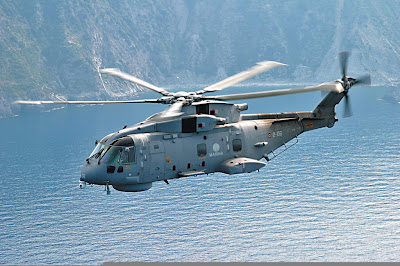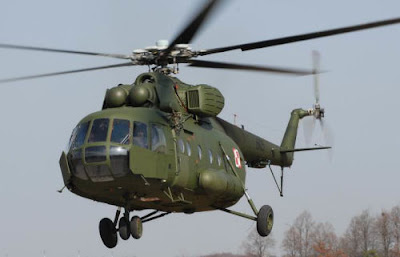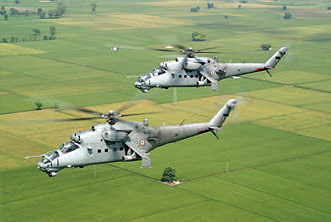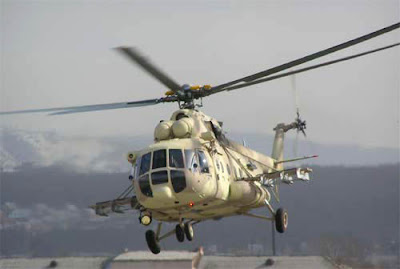The Mi-17v5 differs from the Mi-171V in having a protruding ‘dolphin’ nose rather than the glassed-in round noses other Indian Mi-17s possess, more powerful 2,200hp TV3-117VM engines with new auxiliary power unit, and an extra port door on the starboard side. It shares the rear fuselage ramp that distinguishes both of these models from earlier Mi-17 versions. The improved Mi-17v7 variant reportedly features the 2,400hp VK-2500 engine with a digital FADEC for full performance in hot and high conditions. This would seem to make it more suitable for India – but media reports indicate that the order is for 80 Mi-17v5s
These characteristics are especially important on India’s mountainous northern and northeastern borders. India already operates both the Mi-17 and the improved 1V as the Pratap, and strategy page notes that the country has about 150 Mi-17 and Mi-8 helicopters in service. IAF Mi-17s were used in the Nov 29/08 commando assault over Nariman House, which killed some of the terrorists conducting their massacre in Mumbai.
The Mi-17 is popular far beyond India, and the type’s consistent string of wins indicate that Russia may have a strong commercial winner on its hands. The American UH-60 is more expensive than the Mi-17, and lacks the tactical flexibility of its rear ramp option. The European NH90 is more expensive still, and offers greater capabilities including a rear ramp and better lift – but suffers from serious delivery and availability problems. The Mi-17, in contrast, offers comparable performance for less, no political restrictions on its use, greater integrated armament capabilities than its competitors, optional versions that include western engines and avionics, and availability that has remained good thus far. While international competition can also be expected from Eurocopter’s Puma family, the Mi-17 is poised to remain a strong export success.






No comments:
Post a Comment